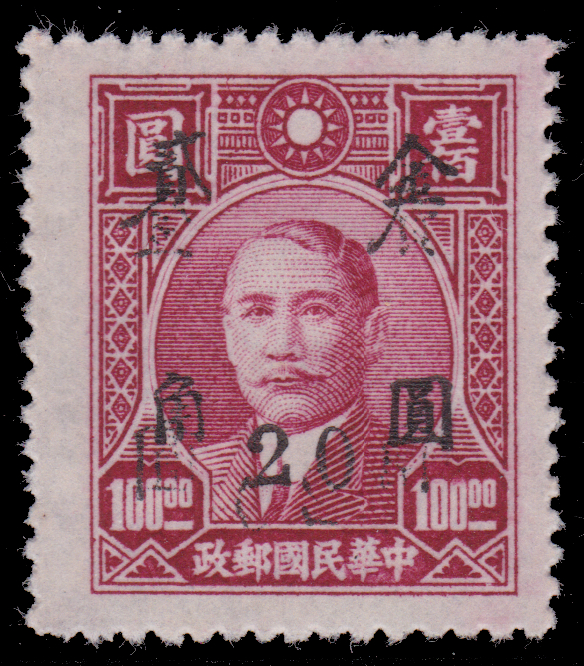
Host is localhost Log in | Basket Empty
Host is localhost Log in | Basket Empty
See the complete list of articles.
Or to visit other parts of the site, click on the title or other links above.

It really is worth looking at all Chinese stamps. About 1 in 1,000 you can still spot something unusual, or a variety that someone else missed.
An example is this stamp, the common 20c Gold Yuan on $100 found recently in a cheap lot. There are lots of varieties of this stamp, printed by the error prone Chang Wu factory in Chentu in 1949.
At first sight, it is the double overprint, Chan G68d, SG 1077b.
But no, it is something more unusual!
Look at the fainter character below the Chinese '2', top left. It is the Chinese character for 'gold', normally top right corner. So is the doubled overprint shifted? No, there is a trace of the 20 below! That wouldn't be there if the overprint was shifted.
Look at the fainter character below the top right character. It starts with a diagonal line from bottom left to top right. It is the reverse of the Chinese '2'.
What we see here is something I have never seen before - an offset of the overprint on the front of the stamp!
Of course, normally we see offsets on the reverse of a stamp.
They are created when sheets of overprinted stamps are stacked when the ink is still wet and pressure on the stack (usually just from the weight of sheets above) prints from the wet overprint on a stamp onto the back of the sheet above.
In this case, one of the sheets has evidently been put in the stack upside down, resulting in the offset of the front of the stamp.
I think my initial reaction was to think - I'd rather it was Chan G68d, the normal double overprint!
But it is something rarer and has made another nice little article!
Contact me if you have any comments on this, or any other part of my web site.